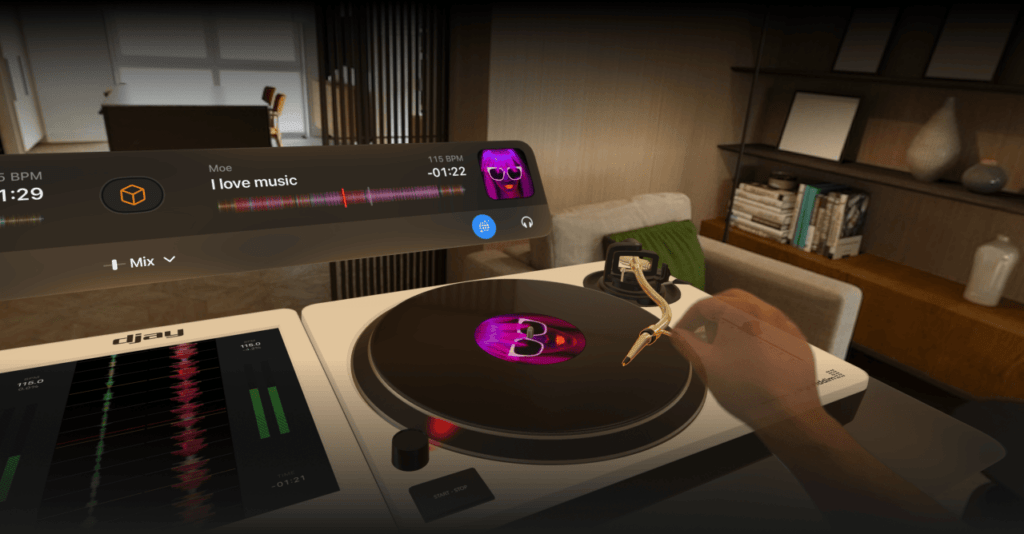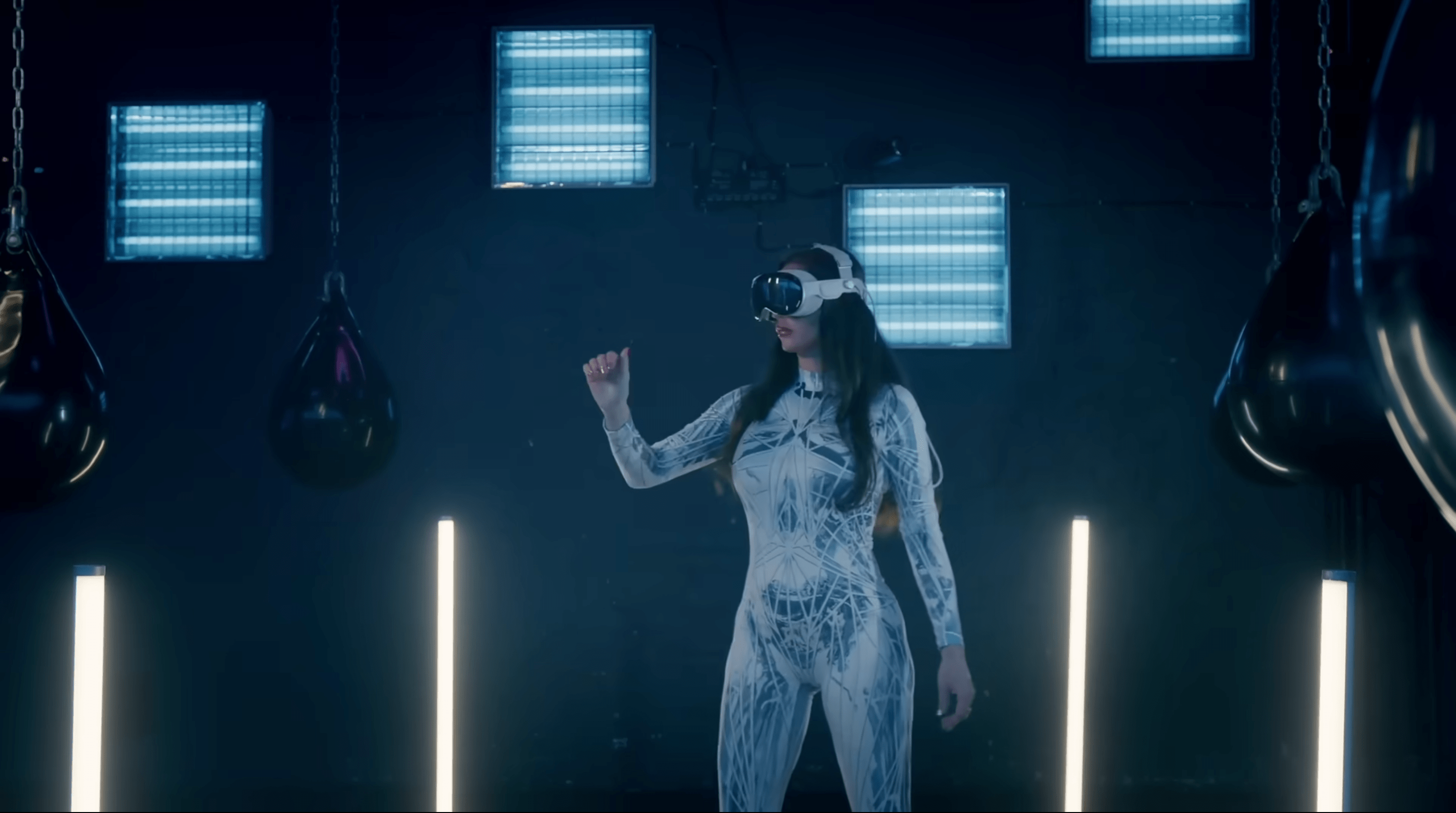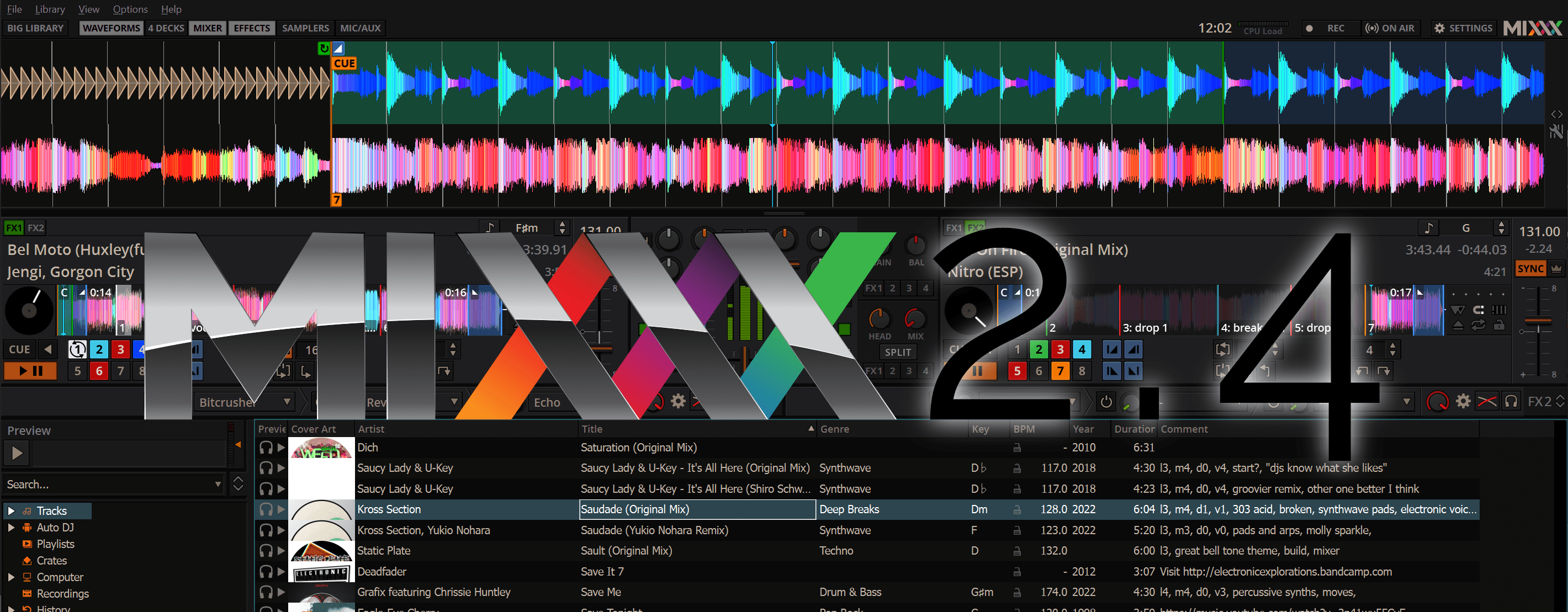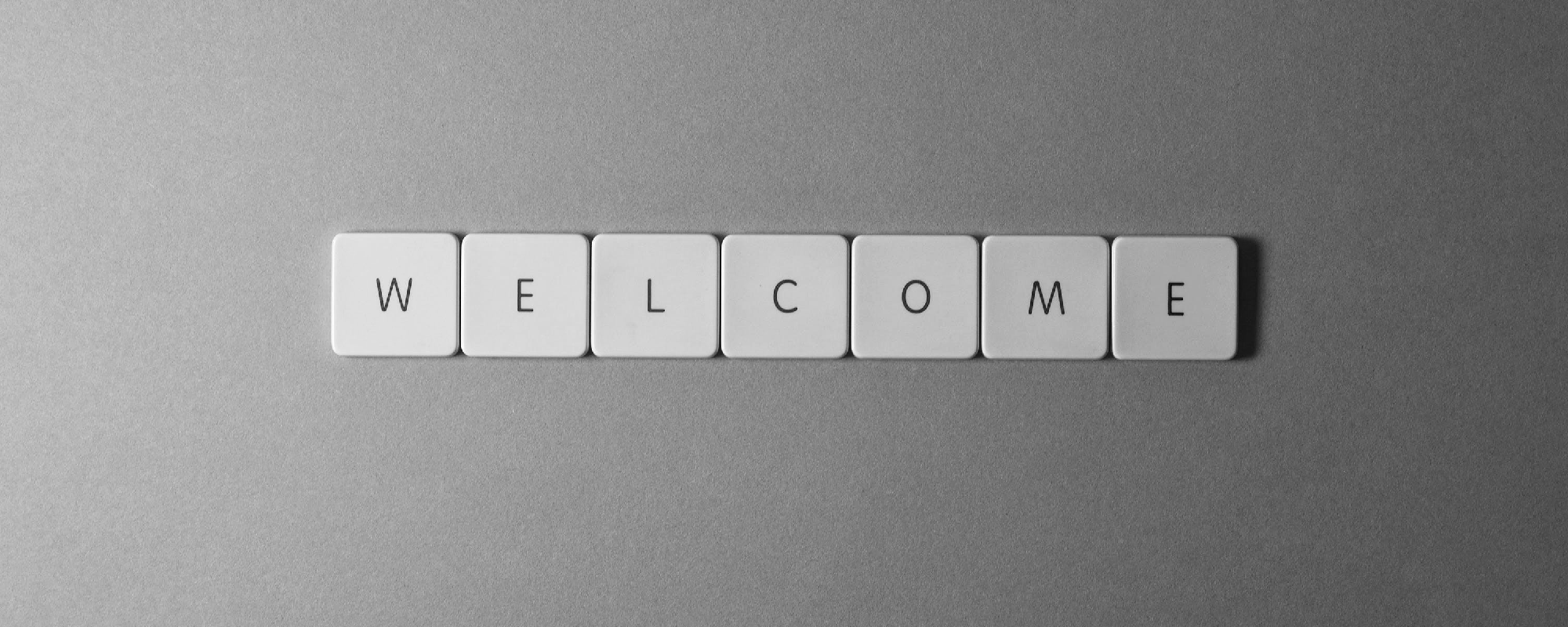Yeah, yeah, “future of DJing” or whatever.
This video of Algoriddim DJ Juicy M popped up recently, showing off the capabilities of the new djay for Apple Vision Pro. Juicy M has done notable performances before for Algoriddim, including the famous four iPad set eight years ago, with each iPad acting as a single deck with a club mixer in the middle.
Juicy M, real name Marta Snitkina, has made a name for herself at the bleeding edge of technology, and this time it’s with the augmented reality capabilities of Algoriddim djay on the Apple Vision Pro. The app works by adding a virtual 3D DJ setup to your real world environment. You can play two decks of music, and, like most apps on the Vision Pro, djay relies heavily on gestures for controlling features.

The app, and the Vision Pro hardware are clearly extremely clever bits of tech (the Vision Pro has a total of 12 cameras, a LiDAR sensor, a depth projector, and six microphones), and Apple’s language around the launch made it clear this is aimed at the very early (and affluent) adopters that will lay the groundwork for a more consumer product. Algoriddim, the company behind the djay suite of software, has always been on a similar trajectory, and a close working relationship with Apple… so much so that they get mentioned in many of the keynotes and are even the first DJ software to add Apple Music streaming.
It’s like touchscreens, but worse
For basically decades now, DJs have been tempted by dreams of using alternatives to physical controls, from dedicated touchscreen controllers, to open-air gestures including the infamous BeamzDJ. As far back as 2002, JazzMutant were building touch screen MIDI controllers that could have a customised UI via desktop software. This was followed by a tablet app called TouchOSC which lets you edit the interface directly, and can use wired or wireless connection for MIDI/OSC control.
There’s been a drive to innovate alternatives as long as we can remember. Even as far back as 1920, someone (Leon Theremin) came up with a self-named synthesiser, the Theremin, for waving your hands about to make noises. Even Algoriddim has a history of delving into the alternatives with the addition of aerial gesture controls on iPads with Bionic chips.
That’s not to say these things can’t be fun in of itself, it’s just that you lose some of what makes DJing the interactive experience you expect. Just using the mobile apps to mix a couple of decks, it quickly devolves into target practice, while you cautiously probe the screen with your finger to hit the correct location for the action you want.
And this translates to the crowd experience.
Thing is, it’s perfectly possible to get some interesting interactivity with motion controls and virtual DJing, but this stuff always comes at the cost of extra setting up and AV equipment. Take, for example, our very own Arkaei’s setup for integrating Microsoft’s Kinect spacial sensors into his performances. This concept opens up a whole extra level of interactivity that can involve the crowd when the sensor faces them.
With AR, these problems with a lack of interactivity are compounded by the fact there’s even less for the crowd to see. You’re just watching a person with silly goggles on waving their arms about, unless the whole crowd have devices of their own. Ironically, I’d say that the ‘older’ tech of VR headsets has more potential since it can better project you into virtual space via a digital avatar. There are already well known VR raves.
But just like anything, there’s a place for AR DJing in the home, where DJs can happily play music without having to worry about the crowds. Unfortunately, this (along with the price tag) severely limits the appeal of the platform.
So, where now for Apple Vision Pro DJing?
Let’s get one thing straight: I have the utmost respect for the technical achievement of both the Vision Pro and Algoriddim’s continued advancement at the edge of DJ technology.
As it stands, AR on the Vision Pro is a solitary experience, but it doesn’t have to be. The Vision Pro is more than capable of hooking you up with people remotely via the virtual avatars it creates. Integrating djay for Vision Pro with avatars in a streaming service could mean a true virtual club environment. I could see something like this being able to tie in to Twitch, but with a VR club for people tuning in.
In the end, this concept (and both the hardware and software are concepts) is likely to end up the same as all the other virtual experiences of physical DJing.
If you’re rich and own one of the Apple Vision Pro headsets, grab djay for Vision Pro from the App Store.



